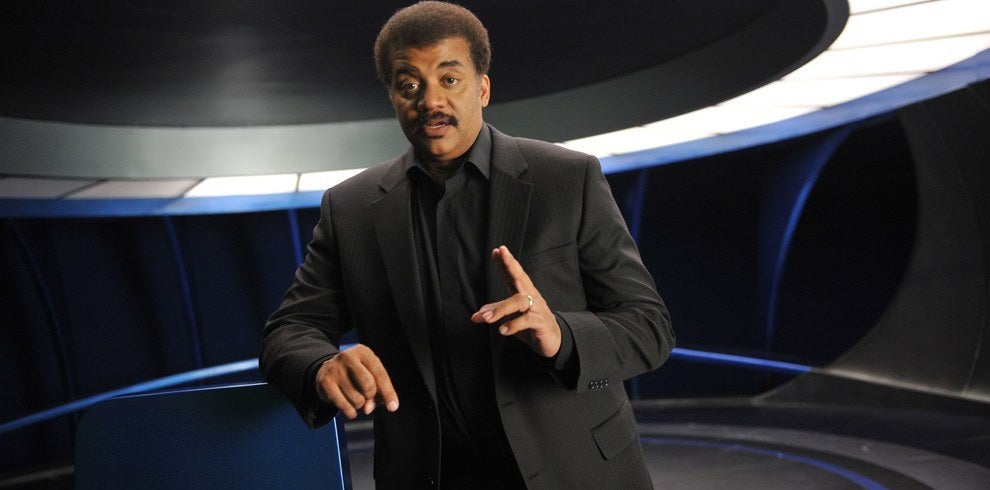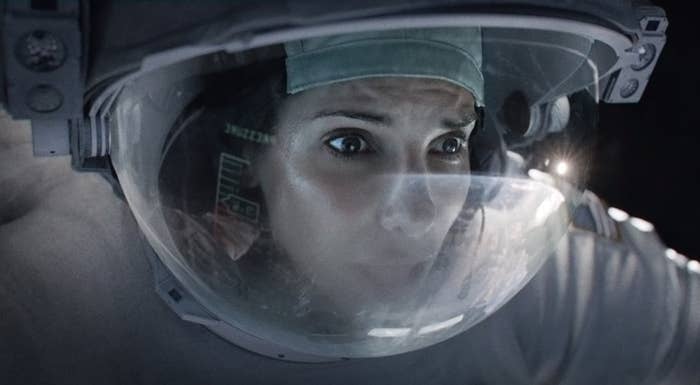Astrophysicist Neil deGrasse Tyson — director of the Hayden Planetarium at the American Museum of Natural History in New York and host of the Fox documentary series Cosmos: A Spacetime Odyssey — has been known to fact-check a film's science.

A year ago, he hilariously critiqued the science in the space-set Gravity.

On Sunday, Tyson took to Twitter to share his thoughts on the science in Christopher Nolan's new movie, Interstellar. And this time he was far more complimentary.

Tyson seemed impressed by the number of scientists populating the cast.
In #Interstellar: All leading characters, including McConaughey, Hathaway, Chastain, & Caine play a scientist or engineer.
As well as its diversity of gender.
In #Interstellar: Of the leading characters (all of whom are scientists or engineers) half are women. Just an FYI.
He was also tickled that real theoretical physicist Kip Thorne — who executive-produced Interstellar and served as its main scientific adviser — got a shout-out in the movie.
In #Interstellar: There’s a robot named KIPP. One of the Executive Producers, a physicist, is named Kip. I’m just saying.

But Tyson reserved his most fulsome praise for how Interstellar dealt with the way gravity affects the way objects experience time, aka general relativity.
In #Interstellar: And in the real universe, strong gravitational fields measurably slow passage of time relative to others.
In #Interstellar: Experience Einstein’s Relativity of Time as no other feature film has shown.
In #Interstellar: Experience Einstein's Curvature of Space as no other feature film has shown.
He also cited a real-world example of this phenomenon.
GPS satellites, located farther from Earth’s center than we are, keep faster time than do our clocks on Earth’s surface.
GPS Satellites are pre-corrected for General Relativity, allowing them to beam us the accurate time for Earth’s surface.
And he singled out the film's depiction of zero gravity...
…the plausibility of that giant wave planet…
In #Interstellar: You observe great Tidal Waves from great Tidal Forces, of magnitude that orbiting a Black Hole might create
…and the spherical shape of the wormhole outside Saturn.
In #Interstellar: You enter a 3-Dimensional portal in space. Yes, you can fall in from any direction. Yes, it’s a Worm Hole.
Tyson noted a specific homage in the film to one of director Christopher Nolan's sci-fi touchstones.
In #Interstellar: They reprise the matched-rotation docking maneuver from "2001: A Space Odyssey," but they spin 100x faster.
But, ever the rigorous scientist, Tyson also had some pointed critiques of Interstellar, such as how much time its characters spend hanging out near a black hole.
Or getting into a needless physical altercation.
In #Interstellar: On another planet, around another star, in another part of the galaxy, two guys get into a fist fight.
And after making another plug for his colleague Kip Thorne…
In #Interstellar, if you didn’t understand the physics, try Kip Thorne’s highly readable Bbook “The Science of Interstellar"
…Tyson couldn't help but take aim at one of the film's true weaknesses.
In #Interstellar, if you didn’t understand the plot, there is no published book to help you.
However, perhaps sensitive to his tendency to take movies to task, Tyson also reminded his followers that while he is one of the most prominent scientists in the world, he is not a professional film critic.
REMINDER: Never look to me for opinions on new films. All I do is highlight the science one might or might not find in them.
